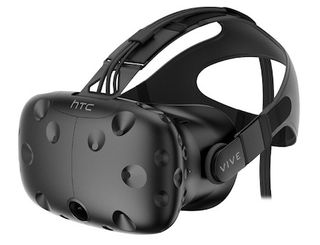For Virtual Reality, Hurdles Cloud Picture

Tech exec Duncan Stewart likens the joys of virtual reality to a roller coaster ride: the experience is incredibly exciting, immensely fun, a guaranteed adrenalin rush. And the experience is short for a very good reason.
“[We] just don’t want to feel like that all the time,” said Stewart, director of technology, media and telecommunications research for Deloitte, speaking on July 18 at the Los Angeles Entertainment Summit (LAES).
Stewart was moderating a panel on VR at this annual, insider confab of studio execs, retailers and content distributors, and he seemed almost loath to tell Hollywood the truth: VR has a lot preventing it from being a big entertainment moneymaker.
VR’s price is a problem, he said, with consumers “pushing back” against the cost for first-generation headsets. Women are under-represented and not catered to in the industry—a major problem for a tech industry that’s already male-dominated. And, maybe most important in Stewart’s opinion: VR demands immersive dedication from users. And that means no second screen.
Younger viewers are so used to multitasking while engaging with entertainment—using social media, wandering online, texting—Stewart said he sees the lack of second-screen engagement with VR as “a deal-breaker.”
Rikard Steiber didn’t disagree. The senior VP of virtual reality for HTC Vive (which, along with the PlayStation VR and Oculus Rift, is among the few VR headsets being marketed to consumers in 2016) even backed Stewart up in some of his declarations.
Asked by a member of the LAES audience whether the future of VR was feature-length films, Steiber was frank: “The answer is no.” And his reasoning was sound, from a technical point of view—cinematic storytelling has always been told from a frame perspective, a four-walled presentation put in front of the viewer. Virtual reality, however, can best be described as a spherical experience, Steiber said. It’s not laid out directly in front of you; it’s everywhere. And that presents challenges for long-form story content.
Broadcasting & Cable Newsletter
The smarter way to stay on top of broadcasting and cable industry. Sign up below
Thus far, Steiber’s argument has held true: Only one feature-length virtual reality, 360-degree film has actually been produced and released (the dark mobster mockumentary Career Opportunities in Organized Crime) and in June a second was announced, Jesus VR—The Story of Christ, a 90-minute, 360-degree production from VR companies Autumn VR and VRwerx, currently slated for a holiday release.
Hollywood’s major studios have certainly delved into VR (most notably 20th Century Fox, with its well-regarded Wild and Martian VR Experience endeavors), but none have attempted a major, feature-length 360 production. That what leads Steiber to believe VR’s future lies elsewhere.
“It’s going to be experience, and we’re in the early days of conveying [that],” he said. “I’d argue that we’re embarking on the next entertainment platform. This medium is truly unique in that it can convey experiences like no other.”
He said that VR will find its long-term footing in places such as education (where visual teaching can lead to better retention), retail (where people may place more value on what they touch, even if it’s virtually) and, of course, gaming (where most any game can be enhanced using a 360-degree mentality).
“It’s not about the hardware, it’s the content, the experiences,” Steiber stressed. “We have to take the red pill, and dive into these experiences. The hardware is [just] the portal.”
GREAT EXPECTATIONS
Yet that hardware needs to be not only cheaper, but also capable of delivering content in 4K and high dynamic range (HDR). Those are video expectations consumers will demand from all their entertainment in the near future, according to Brad Allen, executive chairman for live virtual reality tech company NextVR. And the headsets offered today are far too unwieldy, he said, saying a lighter, “goggle” headset is in the future, “unless you can tell me that technology has stopped progressing, that this is as good as it’s going to get,” Allen said.
Hardware pricing and design aside, VR’s success or failure will still rest on content, according to Daniel Engelhardt, VP of interactive ventures, games and VR for Lionsgate. Premium VR content experiences—produced by those who know entertainment—will help to ramp up adoption of the technology, he said. “We’re in the early days of VR, the very early days of [VR] content creation,” he said. “We’re just beginning to [scratch] the surface of what’s possible.”
Surprisingly, while video games have helped introduce VR to the masses, Steiber argues that gaming content won’t be the main reason people stick with VR in the long run. He said that while endeavors like the “Star Wars” VR game Trials of Tatooine for HTC Vive will give VR a quick, short-term boost, announcements such as Lucasfilm’s reveal of a Darth Vader-centered VR cinematic experience will carry more weight.
However, NextVR’s Allen questioned whether even cinematic VR experiences would in time keep consumers on the hook for good. He pointed to the potential of sports, where VR can put people in front of the action in ways they’d never experience otherwise. “If you love the NBA, you’ll go back [to VR],” Allen said. “The Martian Experience? I think that’s only a small part of this.”
Given this great deal of early disagreement on what type of experiences will drive VR adoption and retention, of course nobody could agree on how long it will take for VR to go mainstream. Chris Edwards, founder and CEO of digital pre-visualization company The Third Floor, and chief production officer for VRC: The Virtual Reality Co., argued that price and lack of content makes VR’s mainstream acceptance a five-year job.
Steiber’s take? “I guarantee that in the next 18 months, [your kids] will all have VR headsets.”
